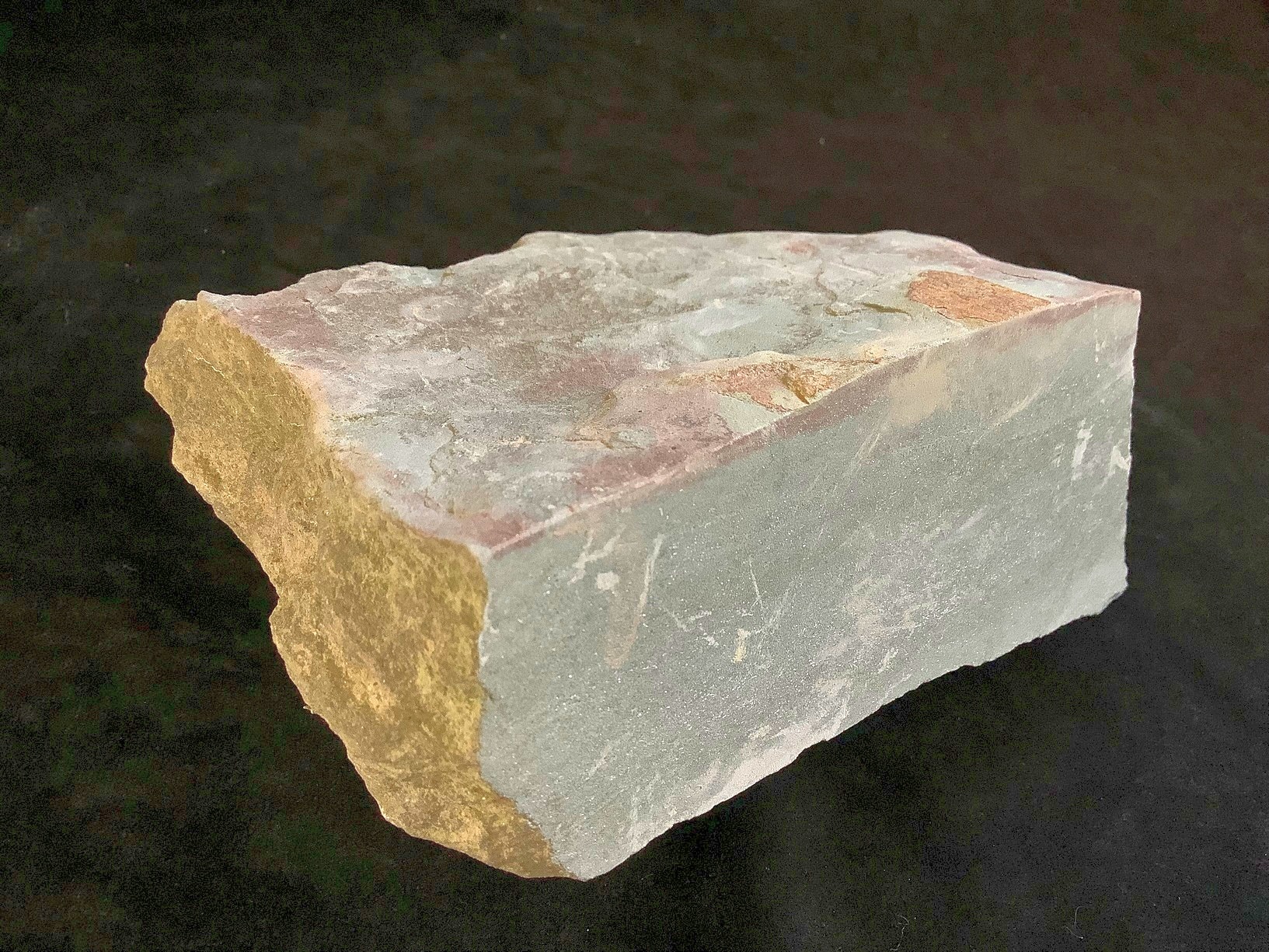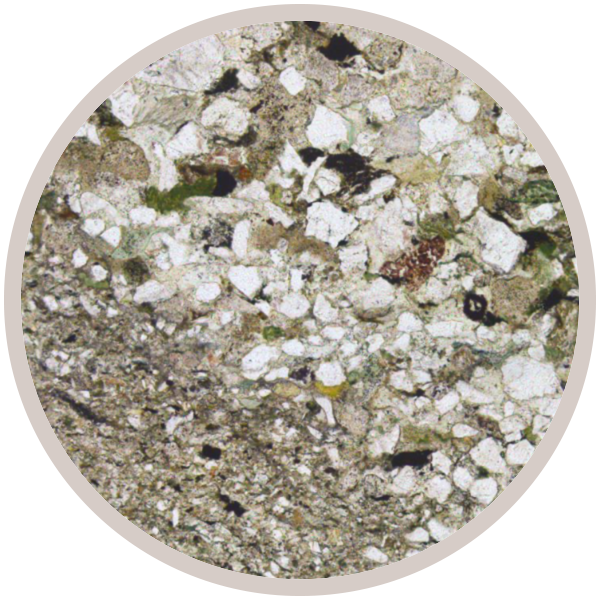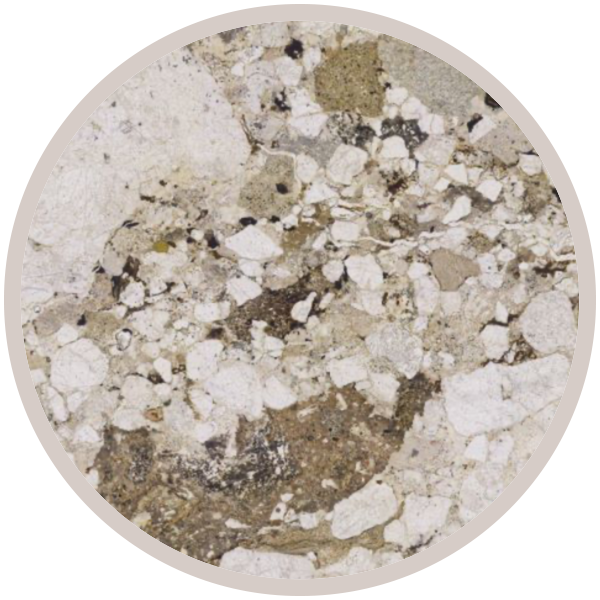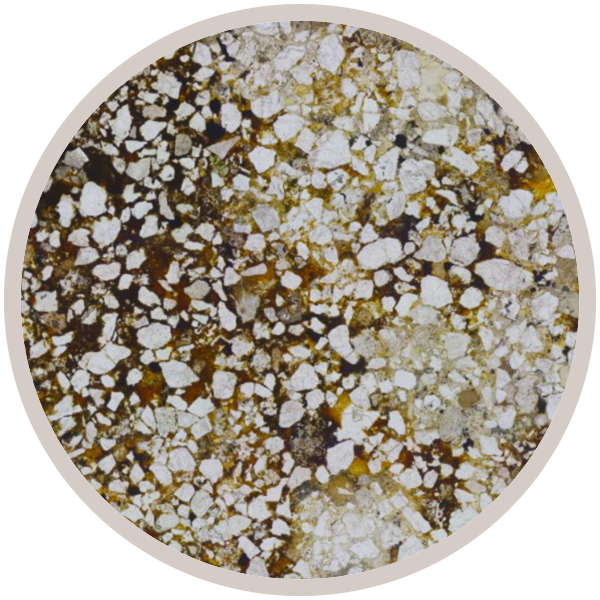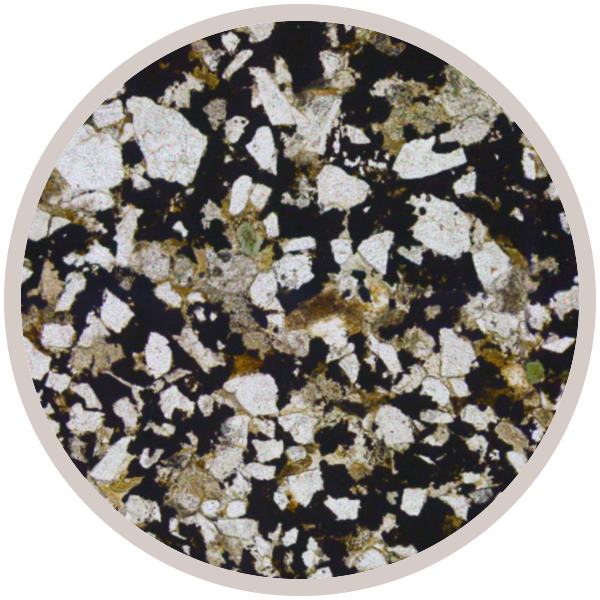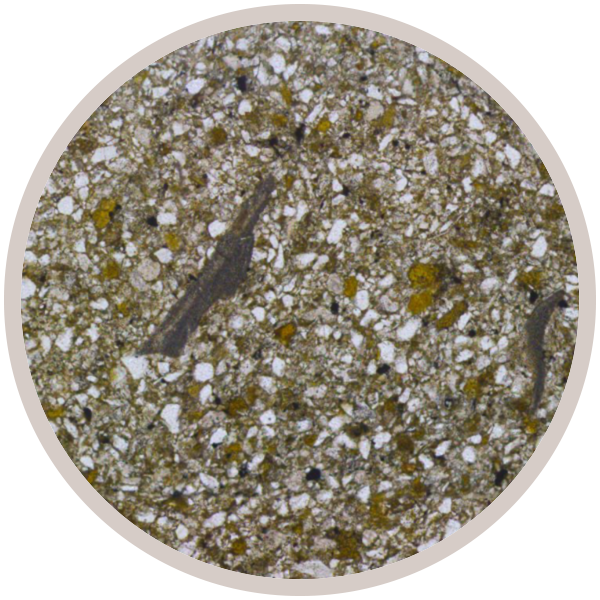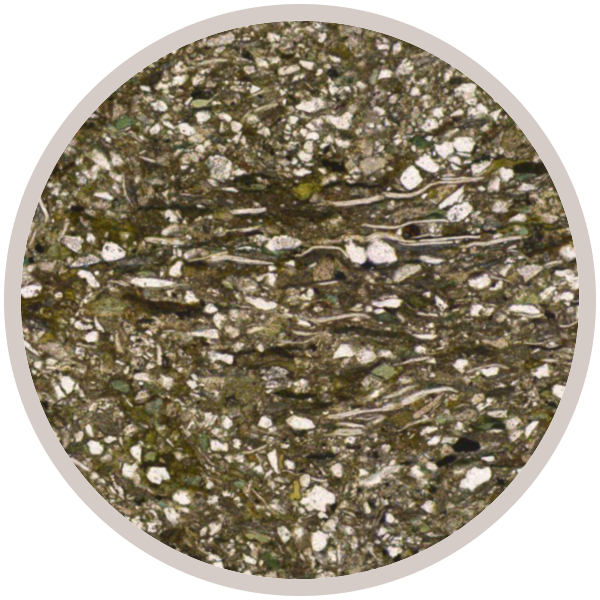
Fact sheet
Greenish grey siltstone with visible mica flakes, collected from immediately beneath the basal Carboniferous conglomerate in Brewin's Cutting. This sedimentary rock is of Silurian age, around 420-417 million years old.
At this time, this region lay just south of the equator in a shallow, tropical sea. This siltstone was laid down in this shallow sea, made up of mineral grains eroded off nearby landmasses. Shortly after deposition, the area was uplifted by tectonic movements and the sediments were exposed to the air. Evidence for this in the outcrop is reddening of the siltstone in places, where the ferrous iron in the rock (greenish) was oxidised to ferric iron (reddish) by subaerial exposure. The Silurian rocks were exposed and eroded for around 100 million years before being submerged again, when the coarse Carboniferous conglomerate was deposited on top.
The irregular surface between the top of the Silurian siltstones and the base of the Carboniferous conglomerate is an example of an angular unconformity: a time gap in the sedimentary column where strata are missing. These gaps generally mark episodes of uplift and mountain building.
In thin section, the rock is fine-grained and brown in colour, with no easily discernible bedding or sedimentary lamination (layering). At higher magnifications, the following detrital mineral grains can be seen: elongate, clear laths of muscovite mica; stubbier green grains of chlorite; uncommon brown laths of biotite mica; colourless, subangular to subrounded grains of quartz and some feldspar; black (opaque) grains of various shapes, which may be iron oxides or perhaps organic debris. The fuzzy, grey-brown groundmass is likely a mixture of clay minerals.
The only clue to bedding is that the muscovite laths are roughly aligned subparallel to the long axis of the section - this may reflect the orientation they had when deposited. Mica flakes preferentially settle on their flat crystal faces, parallel to the perfect cleavage.
ID challenge: scattered through the thin section are very elongate, pale brown laths that are isotropic (black under XPL). They could be altered biotite, but the isotropic nature is atypical. If there are any Late Silurian Siltstone Detrital Grain experts (or even Generic Pale Brown Lath in Sediment experts) out there who can shed light on this mystery, please contact us at: virtual-microscope@open.ac.uk
This sample was collected as part of the 'Macro to Micro' project.
This Collection showcases the geodiversity of a classic geological site: the Saltwells National Nature Reserve in the West Midlands.
As well as displaying thin section and hand specimen views along with information setting them in the context of their landscapes, we also include perspectives and creative responses to the geological heritage of the sites from the local community.
| Explore the stories of the rock layers at Saltwells and Wren's Nest NNRs, designed by students at King Edward VI School, Stourbridge: |
This Collection was made possible by funding awarded to the 'Macro to Micro' project by the Natural Environment Research Council (NERC) under their 'Growing Roots' scheme.
